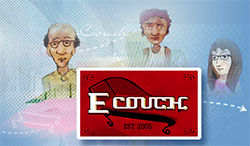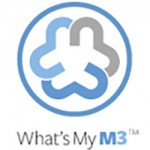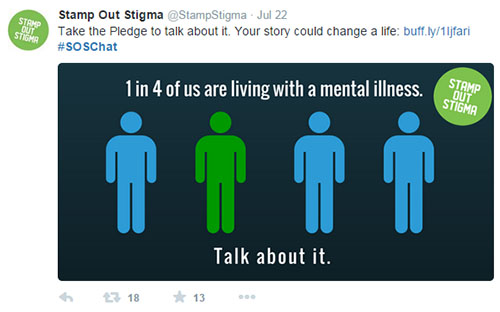“Social Media” is the buzz phrase of the day. It seems we communicate more with each other through our smart phones and computers than we do face to face. It’s the thing. It’s the fad. It’s where people are, where they hang out, and how they talk to one another… through this increasingly infamous texting, tweeting, etc. technology.
Choosing Social Media Technologies for Mental Health
So, it’s no surprise that every day we hear about new social media-based technologies being developed to serve the mental health community. It’s all about speaking to people where they are and reaching them in a comfortable environment. Online therapists, text crisis lines, twitter chat sessions, and messaging programs all aim to connect people to resources in a time of need. They can be wonderful tools when used properly, but potentially dangerous if they aren’t. At best, they can help draw people from out of the shadows, those who might otherwise not seek help, allowing them a sense of anonymity that makes them feel safe. At worst, they can try to substitute themselves for actual human contact, cognitive therapies, and real world services.
The Crisis Text Line
The Crisis Text Line is a national text line that people can use whenever they are in crisis. Just text the number 741741 and you’ll be connected to a trained counselor who will respond to you immediately. The counselor’s goal is to provide you with support and in a sense, take you by the hand, leading you to a calmer and safer place. It’s the classic definition of Mental Health First Aid and it’s well-executed. The text line serves as a life preserver for someone who is drowning, connecting the user with someone who can help almost instantaneously and provide support until a longer term game plan can be established.
Yik Yak Chat Forum

Yik Yak is a popular smart phone app on college campuses. Basically a chat forum, it is definitely used by students as a forum to hook up and gossip. But it’s increasingly become the place that people feel comfortable posting very personal and sometimes desperate pleas for help. The anonymity of the service, combined with the ready-made audience, make it a compelling space for seeking peer support. A despairing post is often met with a flood of responses full of support, kindness, and hope – just the sort of feedback that may give someone the confidence to seek the professional help they really need.
Cognitive Therapy Websites

 More than 800,000 people have registered for two online cognitive therapy websites- MoodGYM and E-Couch. These sites provide users with interactive self-help online courses and were recently profiled in an Inquisitr Blog posting. While again, no substitute for real support, these programs can empower users and help to reinforce positive messages to prevent relapses.
More than 800,000 people have registered for two online cognitive therapy websites- MoodGYM and E-Couch. These sites provide users with interactive self-help online courses and were recently profiled in an Inquisitr Blog posting. While again, no substitute for real support, these programs can empower users and help to reinforce positive messages to prevent relapses.
Mental Health Apps


 If you own an iPhone, then you also have access to a wide variety of mental health apps. Operation Reach Out is a suicide intervention app for military personnel and veterans, while WhatsMyM3 purports to monitor levels of depression and anxiety, and Thought Challenger helps the user rebut his or own negative self-talk. The real purpose served by these apps is to give users a low-cost way to investigate options and focus on their own needs. They are, by no means, an effective substitute for therapy or real human connection. They should be used sparingly and as an adjunct to actual mental health treatments.
If you own an iPhone, then you also have access to a wide variety of mental health apps. Operation Reach Out is a suicide intervention app for military personnel and veterans, while WhatsMyM3 purports to monitor levels of depression and anxiety, and Thought Challenger helps the user rebut his or own negative self-talk. The real purpose served by these apps is to give users a low-cost way to investigate options and focus on their own needs. They are, by no means, an effective substitute for therapy or real human connection. They should be used sparingly and as an adjunct to actual mental health treatments.
Twitter Chats
Then there is the role that social media plays in elevating the conversation about important mental health issues. Stamp Out Stigma, recently put together a twitter chat session that brought together several organizations, including Aetna Insurance Company, Active Minds, and The National Council for Mental Health First Aid, all working towards reducing the stigma associated with mental illness and mental health care. The chat attracted more than 400 users who shared more than 1,900 tweets, all geared towards de-mystifying mental illness and opening the doors to more treatment and understanding.

These are only a few of the technologies out there and in fact, the quantity and breadth of applications can be truly overwhelming. While there is some value to many of these programs, sifting through the bad to get to the good can be very troubling. We urge perspective and hypothesize that their true value is in how they can reach people and help them work through a crisis on their way to seeking more in-depth professional help. None of them are a permanent solution, but many can open the door to real help and recovery.
What Technologies Have Helped You?
Are there any mental health technologies that you have found to be helpful? We would love to hear about it; share your insights in the comments below.

